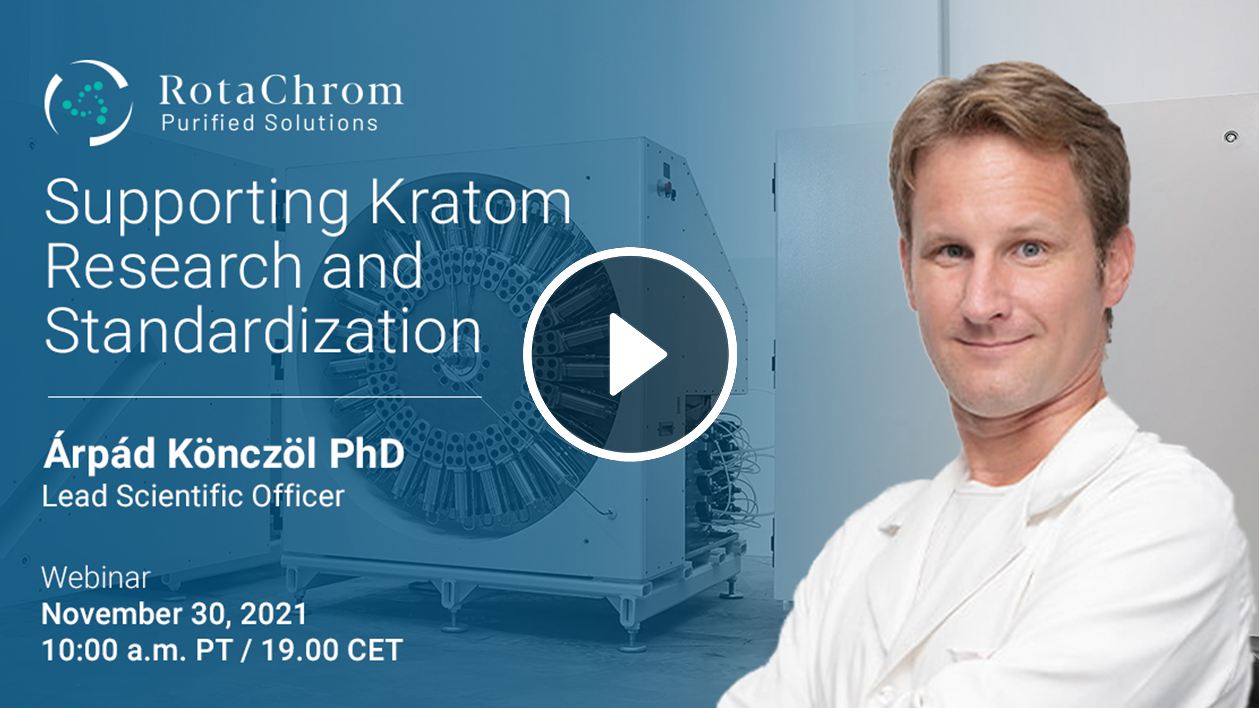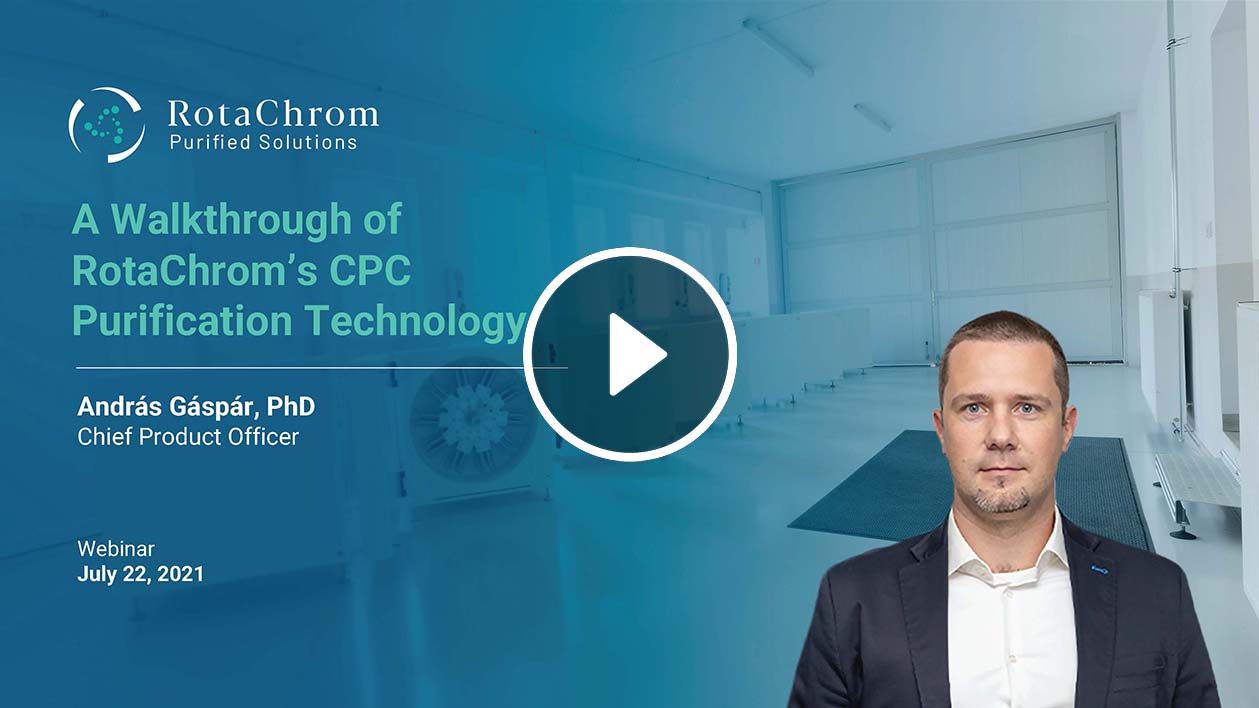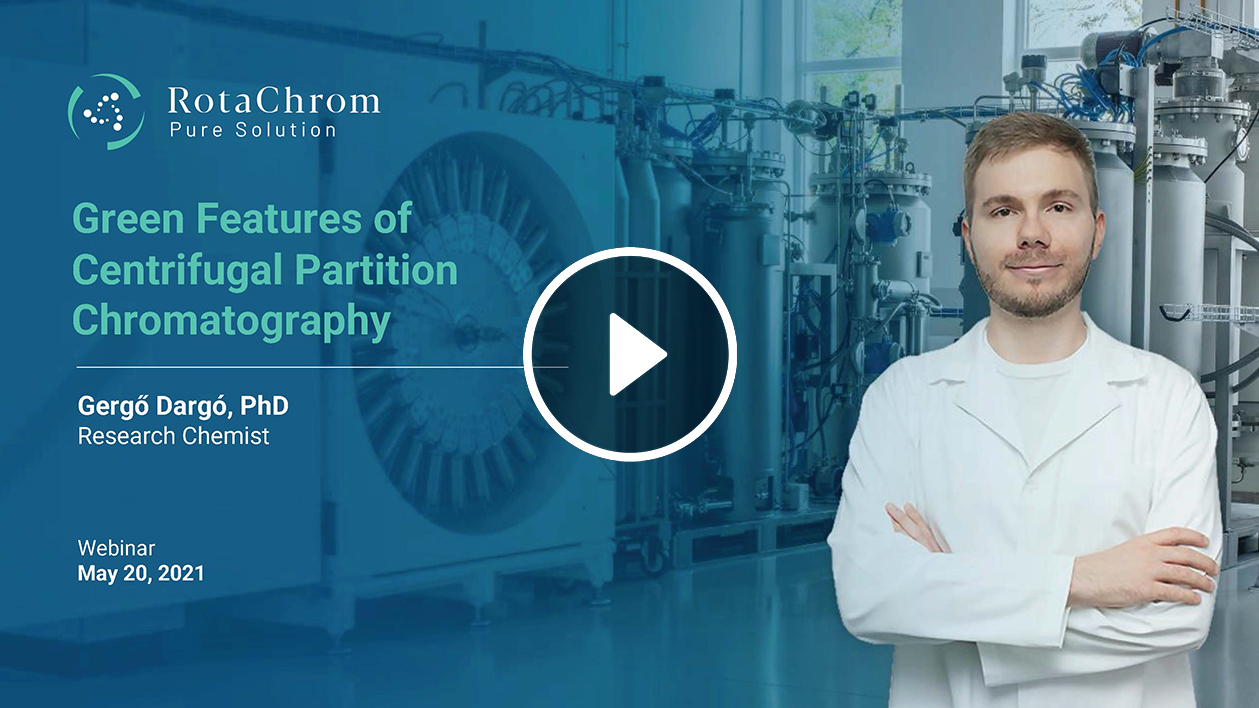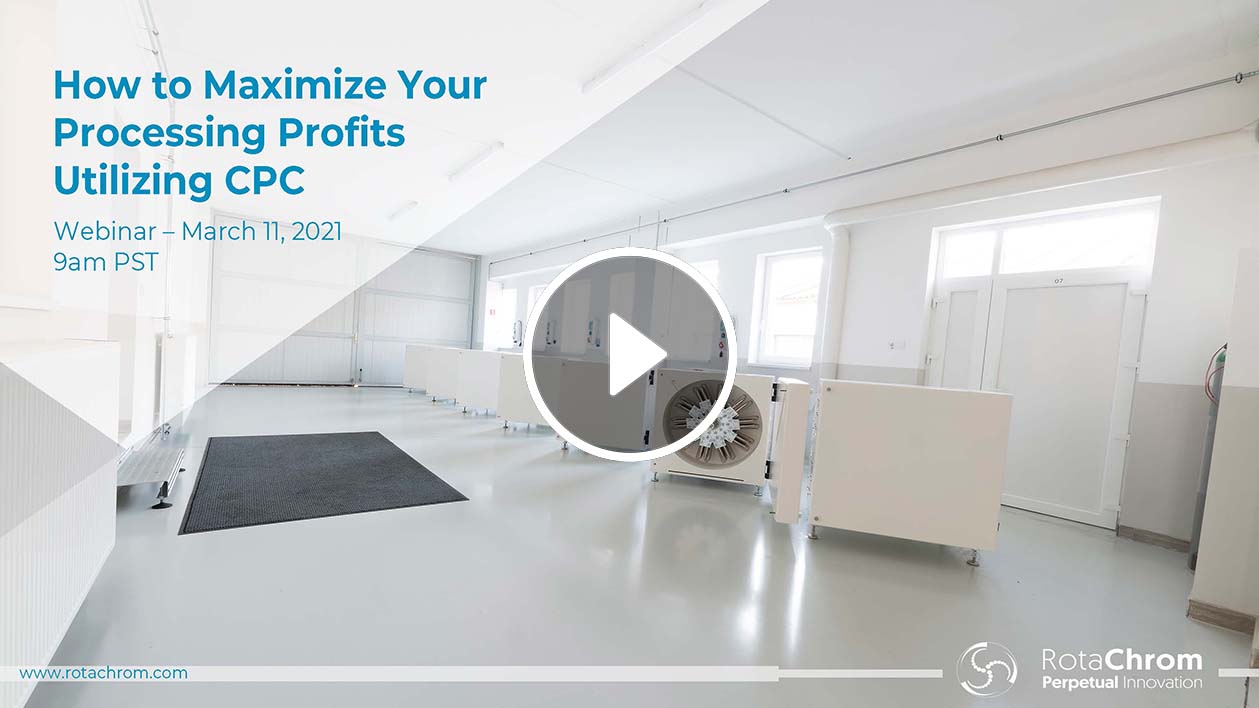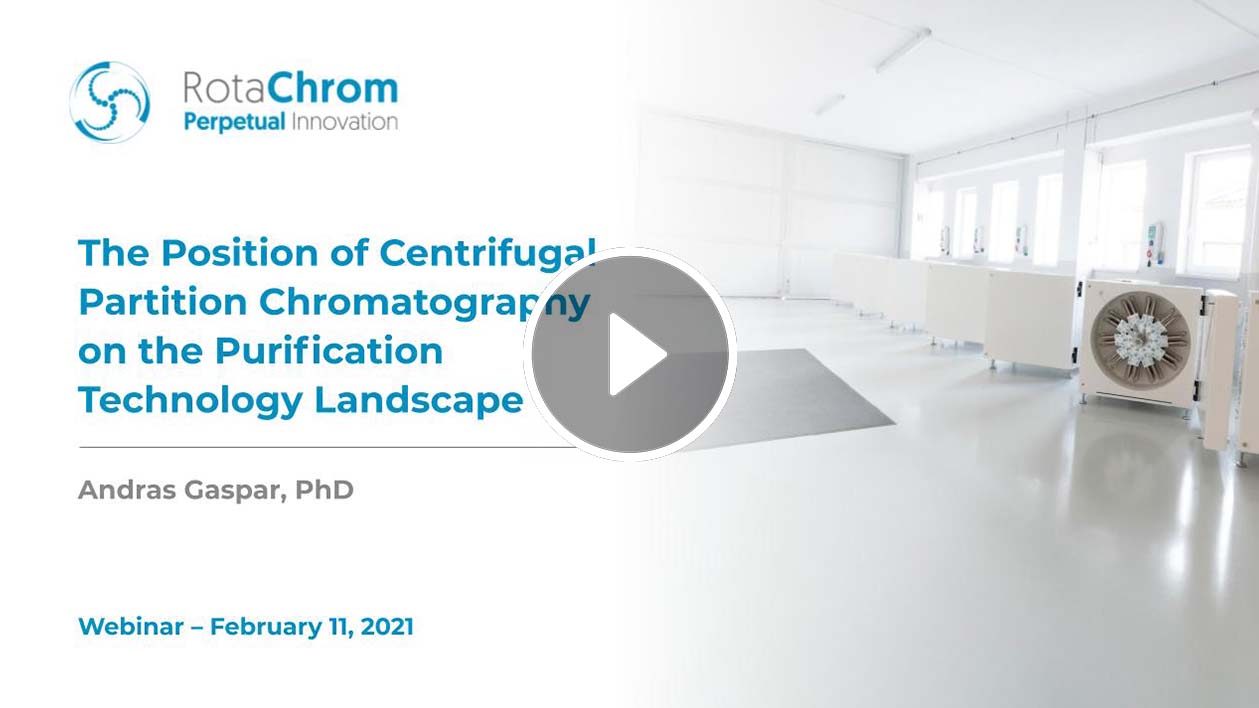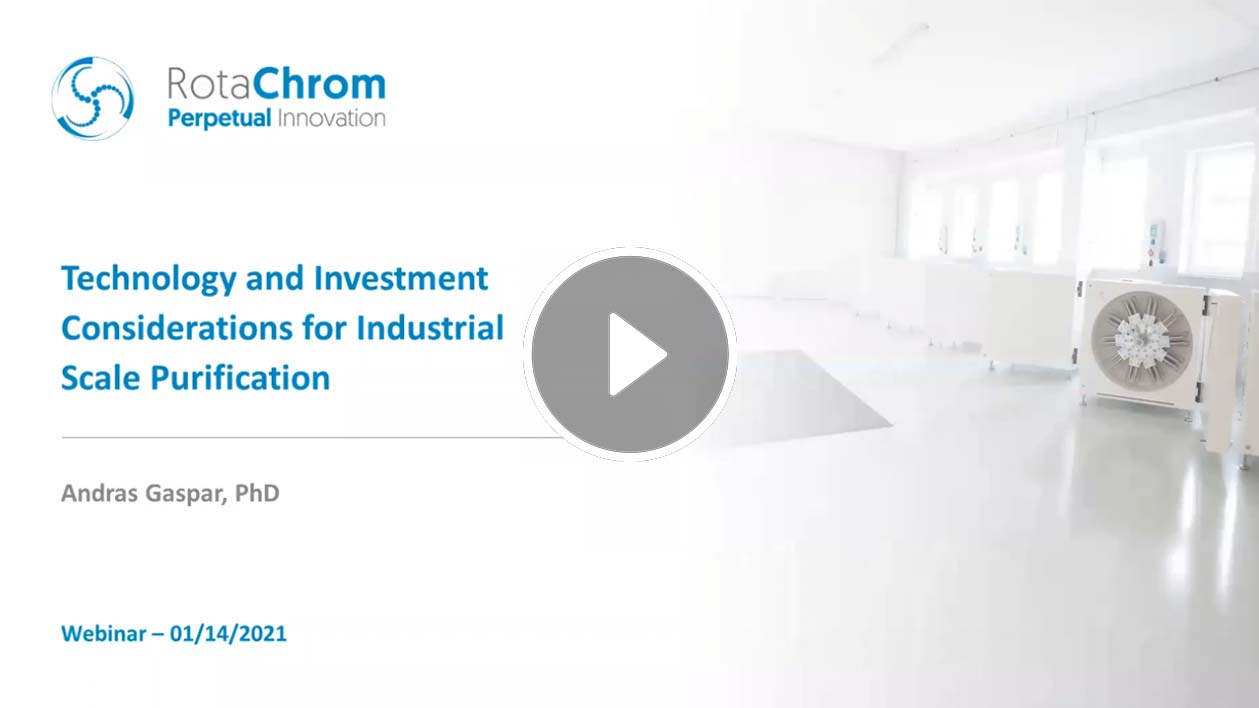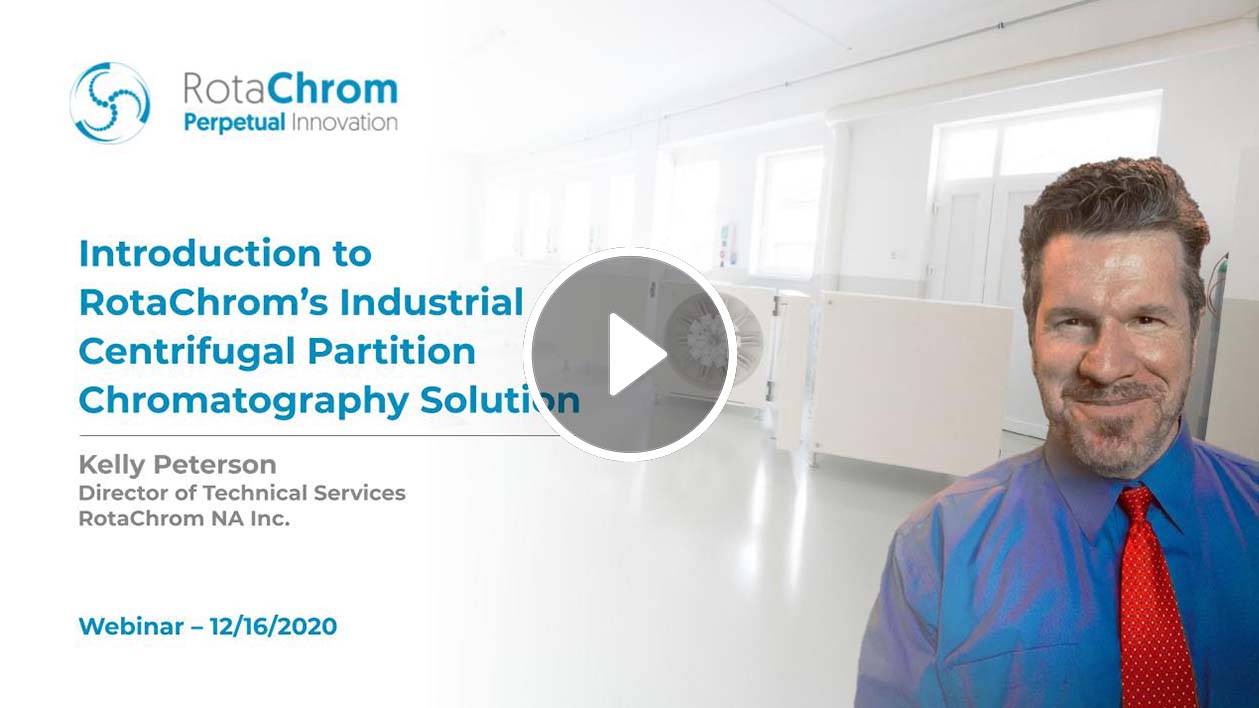Webinar 4 – How to Maximize Your Processing Profits Using CPC
In this webinar, RotaChrom’s Chief Product Officer Andras Gaspar, PhD, reviews the costs and benefits of utilizing centrifugal partition chromatography (CPC) technology platforms at industrial-scale for botanical minor purification. He provides insight into the financial considerations when looking to maximize profits in large-scale purification, including a cost/benefit analysis of RotaChrom’s CPC purification platform, along with other purification methodologies.
Part 1: CPC Overview
As discussed in previous webinars, CPC has a number of benefits for processors looking for an industrial-scale solution to chromatography.
Here are the main benefits of the CPC platform:
- Quick and cost-efficient method development
- Scalability
- Lenient technology
- Flexible operation pathways- Switching between COIs
Probably one of the most significant differences with CPC is that there can be an almost infinite combination of solvents. This makes one of the key challenges during the method development to the perfect combination that enables enough selectivity for the given separation problem. But this allows for an extreme flexible array of tools for CPC separation.
The method development also results in a very cost-effective setup, due to the reusable solvent system. Additionally, because there is no solid stationary phase, the input material can be applied even if it has challenges, like high THC, but also technical-grade solvents can be used without any risk to the machine.
The infinite combination of solvents also provides high flexibility, so changing between product lines or COIs is easy. The same instrument can be used for targeted and non-targeted purification, as opposed to only being used for a single, or limited and well-defined compound.
Part 2: Ownership Cost Structure
Regardless of the benefits of the CPC platform, it is not without cost. For this reason, RotaChrom encourages its customers to evaluate the total cost of ownership along with other key considerations.
When looking at the overall cost of operations, the step that consistently has the highest cost is purification. There are many factors that go into that, which if applied correctly, can help reduce the TCO. Here a look at some of the key cost considerations for purification:

As mentioned earlier, CPC is an extremely versatile tool where many industry related problems can be solved with the very same instrument, simply by changing the solvent system.
Since RotaChrom has operated in the cannabis industry, there have been many shits of the target. In the early days, CBD isolation was the goal, then THC remediation, and now there is lots of interest in minors and their isolations, as well as pesticide remediation, and waste valorization.
Because of RotaChrom’s longevity in this space, the company has the advantage of lots of time to develop methods and gather insights to act as a trusted advisor for clients. With this depth of knowledge and experience, RotaChrom works closely with its customers to find the most cost-effective means of purification utilizing the CPC. One way they do this is with a TCO calculator.
Part 3: TCO Simulator
RotaChrom’s in-house team developed a simulation tool that delivers initial data for TCO calculation. The TCO calculator is highly flexible and can simulate cannabinoid-related purification tasks based on prior feasibility studies.
The goal is to provide an overview of the complete cost structure. Let’s break down the steps needed to get to that point.
First, RotaChrom would look at the Input. Things that would be discussed to get a complete understanding of what the customer needs include:
- Applicable CPC method based on what the specific goal is.
- What is the customer throughput and input material?
- Define the operating conditions.
- Discuss potential financing.
The TCO calculator provides a complete overview of the purification process, including what the output could look like. The output data would include:
- Yield/purity/throughput
- Solvent stream/regulation
- Mass balance
- TCO estimation
- Capacity
The TCO structure contains truncated types of costs, but it is possible to dive deep into the cost structure. Here are a few pieces that can be reviewed in more depth:
- Major cost contributing components
- Cost definition for input/output material
It is also possible to review the overall accumulated cost structure for the first two years, or longer, of operation. This often shows that there is significantly reduced financial risk in the long term. The CAPEX implication is included to assist in the decision making process.
The TCO simulation also allows for a wide range of throughput requirements, which helps to identify optimal operating conditions. Simulating the cost structure of a wider range of input volume is also possible. These calculations help to find the “sweet spot” of operation.
Customers can also go a step further by looking at how the input material volume and quality greatly affects the cost level of the entire operation. Effect of the purity grade of the input material in combination with its volume gives a variety of outcomes on the TCO. With this information, RotaChrom aims to optimize the entire process to reduce overall cost of operation.
Overall, CPC stands for flexibility, scalability, efficiency, and versatility, but there are many costs to consider before moving forward. The TCO Simulation enables better cost control, predictability for later investment, and ROI calculation. Combining the results derived from RotaChrom’s benchmark and TCO tools minimizes risks during process design, and customers can utilize the simulation to fit their exact purification need.
About: Andras Gaspar, Ph.D., is RotaChrom’s Chief Product Officer. Andras studied bioengineering at the Budapest University of Technology and Economics and went on to earn his Ph.D. in chemistry at the Technical University of Munich. After more than a decade of engineering work at IBV Hungary, Gates Corporation, and Continental ContiTech, Andras joined RotaChrom Technologies in 2020.
WATCH ALL WEBINARS

11-30-21
Supporting Kratom Research and Standardization
7-22-21
A Walkthrough of RotaChrom's CPC Purification Technology
4-15-21
Pesticides Remediation by Centrifugal Partition Chromatography
3-11-21
How to Maximize Your Processing Profits Utilizing CPC
2-11-21
The Position of Centrifugal Partition Chromatography on the Purification Technology Landscape
1-14-21
Technology and Investment Considerations for Industrial Scale Purification
12-16-21
Centrifugal Partition Chromatography on an Industrial Scale
QUESTIONS? GET IN TOUCH!


